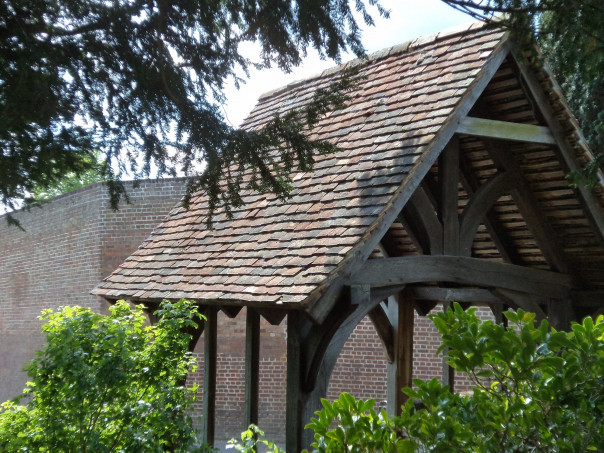Firstly Max Barrett’s ‘A – Z of Kent’ for BBC Radio Kent reaches ‘Tudor Canterbury’ night, Friday 11 June at 8.30pm within the show Access All Areas. Here is the link to listen live: https://www.bbc.co.uk/programmes/p09jgfn2 . Max is a 3rd year Film Studies student at CCCU and it was great working with him on this. Also, on the grounds that the next two weeks are going to be very busy with the Kent History Postgraduates and the Lossenham Project next week, and then the Kent MEMS Fest with Jane Richardson and Victoria Stevens on Friday 18 June and the CCCU History ‘Garden Party’ presentations on Wednesday 23 June, this week I really am keeping it very short.

Not that this week has been quiet, for it has comprised a series of internal and external meetings, a London research trip, an exceedingly short piece for the Agricultural Museum at Brook, a palaeography workshop and writing the last in the series of the St Dunstan’s church history banners. These will be revealed shortly once we have had them printed but suffice to say Dr Diane Heath has done an excellent job of taking the edited text, finding appropriate images and creating seven eye-catching educational, informative and attractive pop-up banners on various aspects of the church. Consequently, we move from a banner on St Dunstan himself through to how the parish negotiated the Tudor Reformation.
Starting this week with Diane’s Faculty Open Lecture on ‘Medieval Animals’ from last week, this is now available online at: https://www.canterbury.ac.uk/arts-humanities-and-education/events/2021/lecture-4-recording.aspx and if you have any problems please do contact Caroline Holden at FAHE.Marketing@canterbury.ac.uk As anyone who knows Diane will appreciate, this is a fascinating exploration into the world of how medieval theologians and others employed stories about animals on a range of levels to teach spiritual and moral ideas to society through sermons, church decoration and texts.

Much shorter but hopefully also interesting is the short video John Hills has constructed about St Martin’s lych gate as part of the university’s contribution to ‘Love your burial ground’ as part of the ‘Caring for God’s Acre’ initiative. This film is shorter than originally planned because John and I encountered a lot of traffic noise but hopefully it still gives you ideas about lych gates, their meanings and uses: https://cccu.yuja.com/V/Video?v=81005&node=334482&a=493815446&autoplay=1 Just to give you a brief flavour of what got drowned out: as well as the recessed seats at lych gates, there might be the lych stone or coffin stool or trestle which was where the coffin was placed near the lych gate. For the pall bearers having set down their burden at the lych gate would expect to see the arrival of the parish priest to start the funeral service. This was not unusual in the Middle Ages but became established nationally through its inclusion in the 1549 Prayer Book.
An interesting folk belief concerns the idea that the spirit of the last person to enter the church yard through the lych gate will stand watch at the gate until the burial of the next person. This had the potential to lead to fights between funeral parties if two bodies were brought to the churchyard for burial at the same time for neither wanted their person to have to take on this burden.
In some ways similarly, the Lyke Wake Dirge was a traditional English folk song that recounts the soul’s journey and hazards faced on its way from earth to purgatory. Like so many other folk songs, it was collected by John Aubrey in the 1680s being part of a far older tradition that included several different versions.

As wooden structures, medieval lych gates were often in a poor state of repair by the Victorian period and the one at St Martin’s in Canterbury was no exception. Consequently, its restoration in the middle of the 19th century was part of the major project of work at the church overseen by the Hon. Daniel Finch, a well-known barrister who was fortunate enough to live at the Green (Outer) Court of Christ Church (now primarily used by the King’s School, and the Dean and members of the Cathedral Chapter) within the cathedral precincts.
Finally, the lych gate as this liminal space between the living and the dead was traditionally avoided by newly married couples in Cheshire and Shropshire who feared paying to pass through would bring bad luck. In Yorkshire the custom was slightly different, the gate shut by children to stop such couples passing through unless they paid to be released.
Oh, and from an ecological standpoint the tiled roof of the lych gate at St Martin’s has a west and an east side, and there is far more moss on the west than the east which I think is down to the wetter, warmer westerly winds, but perhaps others can provide better explanations. In addition, the true screech owls are only found in the Americas.
 Centre for Kent History and Heritage
Centre for Kent History and Heritage Sheila Sweetinburgh
Sheila Sweetinburgh 1421
1421

